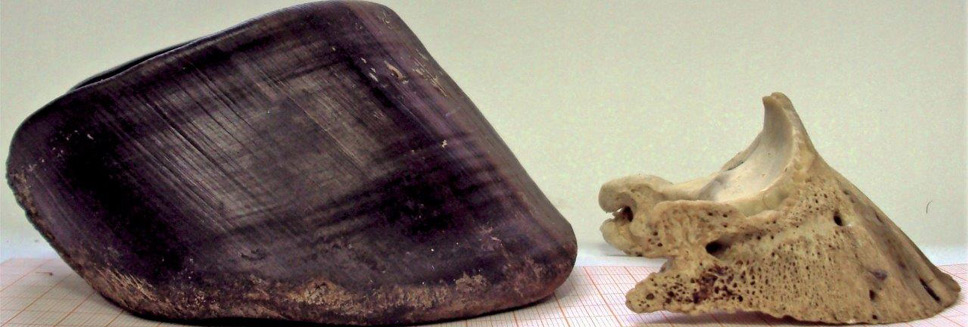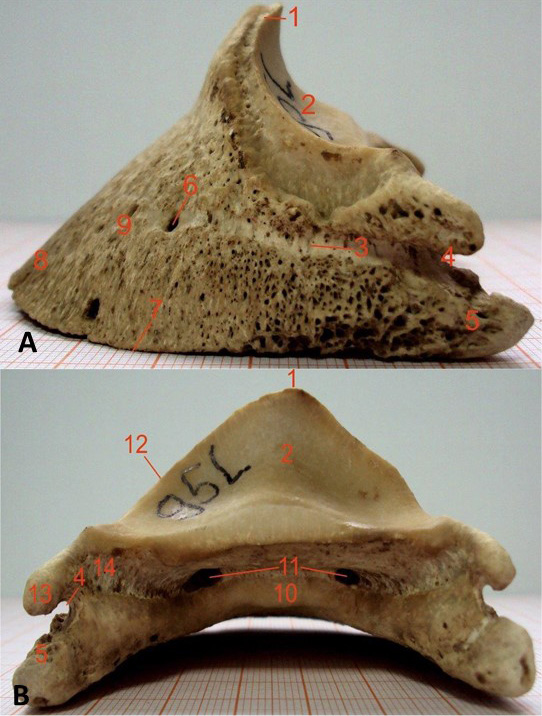Impact of Horse Age and Body Weight on the Angle Between the Parietal Surface of the Coffin Bone and the Ground
Impact of Horse Age and Body Weight on the Angle Between the Parietal Surface of the Coffin Bone and the Ground
Małgorzata Dzierzęcka1, Sławomir Paśko2, Marcin Komosa3, Karolina Barszcz1, Bartłomiej Jan Bartyzel1 and Ewa Czerniawska-Piątkowska4*
Right thoracic coffin bone and hoof capsule; stallion, 6 years old, 505 kg.
Left distal phalanx (coffin bone, ungular bone) of a horse, phalanx distalis (os ungulare) (A) lateral aspect; (B) caudal aspect; mare, 6 years old, 479 kg.
Diagram of the scanning system used for coffin bone measurement.
Image of a bone with the specified area under analysis, CCS - center of coordinate system, AA - analyzed area.
a, b, c, d. Point cloud from the measurement in Figures (A), (B); distribution of angles on the parietal surface of a right and left coffin bone in Figures (C), (D) (gelding, 25 years old, 461 kg), AA - analyzed area.














